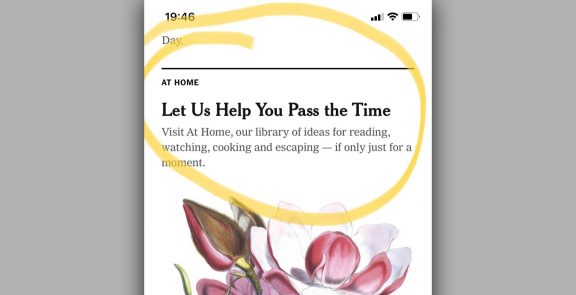

KLF: Can you be reborn on streaming?
IN A NUTSHELL:
The KLF’s arrival on Spotify is a prime example of how alternative products can be integrated in mainstream environments.
THE GREAT STRATEGIC TAKEOUT:
Brands and companies that have a highly politicised, “anti-system” discourse must seek alternative ways to be credibly assimilated in mass distribution and consumption environments.
Why should I read this?
Historically, revolutionary, activist, provocative and anti-system discourses have proved very attractive to certain consumers, who reward this type of content. However, the brands still have economic objectives and they must therefore seek ways to enter conventional market structures without losing authority or being perceived as having “surrendered” to the system.
What are we talking about?
Those of us who were born in the mid-1970’s (including the writer) and bought our first discs and CDs in the late 1980s and early 1990s remember the KLF, or their music sounds familiar when we hear it. Some of their music is part of the soundtrack of our first clandestine parties and moments of adolescent non-conformity.
Beyond their musical appeal (which you can read about here, the KLF are a great source of strategic inspiration, empirically demonstrating that brands may be associated with provocative and polarising ideas without this preventing them from becoming part of the most conventional access and sales structures. However, they must do it differently and in a manner that is consistent with the codes that define them.
After their music had been officially unavailable for more than 25 years, KLF posters appeared in early December 2020 in the trendsetting London neighbourhoods of Shoreditch and Hackney.
Although they had been out of circulation for so long (not having published anything since 1992), someone decided that the KLF had a powerful hold on the popular imagination and that there was a strong market for the brand.
Shoreditch and Hackney are hubs of street culture (despite the pandemic and teleworking), so naturally the images soon spread on line, then in the specialised media and finally the general media, which focused more on what the KLF meant than on the music itself. Finally, on 1 January 2021, a first selection of their most popular tracks could be heard for the first time on streaming platforms and on YouTube.
Not having been exposed to the market for so many years and not having been used in advertising campaigns or soundtracks for TV series or films gives their music an unusual freshness that undoubtedly enhances the original content, which is very likely to come out soon.
Initiatives which use strategies similar to those used by artists such as Banksy, projects like Gorillaz, groups like Radiohead and brands such as Supreme or Comme des Garçons do not normally fit easily into mainstream environments, because their discourse is based precisely on criticising the mainstream.
This release plan is by no means new to music (contact us to learn more about the Daft Punk launch of RAM), but it is the first to show how you can comfortably work with anti-establishment discourse (not offensive or abusive) and integrate it perfectly into mass consumption environments.
Links and what to focus on:
Pitchfork, The KLF Come to Streaming for the First Time
BBC, The KLF’s songs are finally available to stream
- Message sequence prior to launch
- Sensation of “novelty” when listening to this content after years of radio and media silence
- Artistic management and text of posters
WHY YOU SHOULD BE INTERESTED:
Brands and companies must be able to manage content that is, in substance and/or form, provocative and that bases its value on its ability to subvert established values. Doing this well does not prevent it from becoming part of conventional structures and being compatible with more conservative portfolios.
What needs does it meet?
When traditional discourses are not effective, provocation is a way for a brand to build a significant space of its own that captures universal feelings of discontent and mobilisation.
From a strategic perspective:
The use of provocation by corporate entities is significant to the extent that, if it is done well, it consolidates the plurality of brands and companies. Finding a space in the portfolio for someone who earns their living by questioning established values only raises the profile of the host.
Who might be interested?
Brands and companies that want to develop in a contemporary manner which is consistent with the multiplicity of viewpoints in the current market.
Where do I implement it?
At all levels, from the brand’s DNA to all its products, communication and activities.
How do I implement it?
Rigorously and coherently, with an understanding of the strategies, resources and codes that protect provocative, irreverent and anti-system discourse.
How innovative is it?
The use of provocation as a form of differentiation in corporate environments is not new, although it is usually the result of inorganic growth. Doing it organically is what is innovative and a challenge for organisations that want to speak to the whole market.
Key concepts:
Transgression, provocation, assimilation, appropriation, streaming, alternative
I WANT IT FOR MY COMPANY/BRAND. WHAT DO I NEED TO KNOW?
Who is using it already?
The most common use of these initiatives is in the world of fashion, perfume, the visual arts and music. A purely formal use (which is usually at the packaging and/or communication level) can be seen in many high-consumption and lifestyle brands and is not advisable.
Things to keep in mind:
It is essential not to treat provocation solely as an area of communication. To connect effectively with contemporary audiences, the approach must be comprehensive and the strategies for assimilation in the environments criticised must be part of the brand’s DNA.
How do I get a clearer idea?
- Analysing in detail the DNA and activities of these brands: Comme des Garçons, Obey
- Following these artists: Banksy, The Chapman Brothers
- Reading “Rei Kawakubo/Comme des Garçons – Art of the In–Between” by Andrew Bolton and “Mainstream Culture” by Frédéric Martel
- Listening to The KLF and Gorillaz, Radiohead or Rage Against the Machine
How do I share it with my network?
“Can we sustain a brand that criticises everything that the rest of our portfolio does?”


